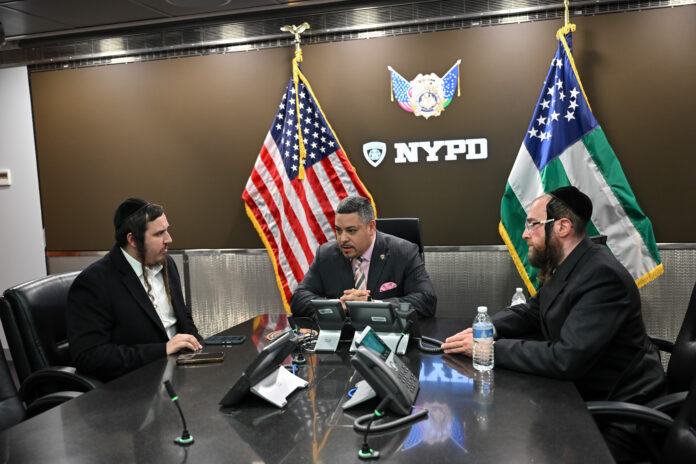The war with Hamas has not just threatened the lives of Jews in Israel. Anti-Semitic attacks and threats have spiked around the world.
Calls for violence against Jews at pro-Hamas marches everywhere have become commonplace. Marches in London included the infamous “Khaybar Khaybar ya Yahud” chant that threatens the death of Jews. Marches around the world included the screamed slogan “From the river to the sea,” calling for the destruction of Israel. A pro-Hamas march organized over the weekend in New York, which started in Crown Heights, was even blatantly named “Flood Brooklyn for Gaza” after Hamas’ “Al-Aqsa Flood” terror attack and massacre.
And the number of anti-Semitic incidents, including assaults, have jumped up in crime statistics. In New York City, there were 33 anti-Semitic incidents reported in the first three weeks of October, whereas the monthly average this year had been 18. People were punched on the train and in the streets; a swastika was drawn on a deli. And the list goes on.
German authorities have warned about a sudden uptick in violence against Jews there. Jewish houses in Berlin were marked with Magen Davids and a firebombing was attempted against a shul.
London police noted that there was a 1,353 percent increase in anti-Jewish offenses compared to the same period last year. (Anti-Muslim offenses rose by 140 percent, yet headlines often deign to compare the rises to one another.)
In the US, college campuses have been one focus of concern. Cornell University’s Hillel program warned Jewish students to stay away from the building housing the kosher kitchen after online threats (“If I see another pig baby jew [sic] I will behead you in front of your parents” was one such comment) were made. Students said that they stayed in their dorm rooms, worried about venturing out. On other college campuses, Jewish students were assaulted as they walked.
One of the most frightening incidents happened in Dagestan, Russia, a predominantly Muslim region, over the weekend: Dozens of men stormed the local airport after hearing that a plane from Israel had landed. Carrying posters with anti-Semitic slogans, they began demanding that passengers in the airport prove whether they were Jewish. “We’re here to kill the Jews,” children accompanying them can be seen saying. They also approached a hotel that they had heard Jews had checked into. Jewish passengers took shelter in a protected part of the airport and were not harmed, but 20 people were injured during the incident.
(The Russian government, predictably, blamed the attack on Ukraine, while Ukrainian President Volodymyr Zelensky blamed the attack on general Russian anti-Semitism.)
With increases in attacks everywhere, the safety of Jews has become a matter of worry. To understand what steps police are taking in the city with the largest concentration of Jews outside of Israel, Shloime Zionce recently joined an NYPD exercise designed to practice the act of protecting New York’s Jewish community.
* * *
As I pass Foley Square, I notice that a large crowd has gathered outside an ornate building across the street. News reporters, TV cameras and broadcast trucks are all on the scene, as well as a large number of New York City police officers. “Just another day in the Big Apple,” I muse to myself. I snap some photos and continue on my way, but I’m soon stopped by a police officer. “Did you take a picture of me?” he asks.
“Yes, I did,” I respond.
“Can you text it to me?” he asks, providing his phone number.
“Sure!” I say.
I then ask him why a crowd has gathered here. “That building is the Manhattan Supreme Court. President Trump will be there later today.”
To read more, subscribe to Ami





















